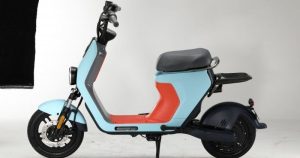Amazon’s biggest asset can also be a headache for its customers. The so-called “everything store” really does sell almost any item consumers might want, but it’s often cumbersome and time-consuming to sort through them all. To avoid “choice overload,” the retail giant has come up with certain signals designed to help people distinguish high-quality products from the rest. They include star ratings and product reviews, as well as “Amazon’s Choice,” a mysterious badge bestowed on some individual items, which has recently become the subject of scrutiny from lawmakers. Now Amazon is testing a new signifier, called “Top Brand.” But no one seems to know what, exactly, a “Top Brand” is, and Amazon won’t say.
Amazon has long given customers the ability to search by “Top Brands,” but the products previously weren’t distinguished by a special badge in search results. Now, if you search for “swimming goggles,” for instance, Amazon may return several pairs from Speedo whose photos bear a “Top Brand” badge. Here’s the weird part: The longstanding “Top Brands” search filter isn’t quite the same thing as the newer “Top Brand” badge. Here’s an example: If you look up “women’s belts” on Amazon, and filter for “Top Brands,” you may notice that not all of the results actually receive the Top Brand badge. How can a company be a Top Brand in one sense, but not in another?
Louise Matsakis via Amazon
Amazon says the discrepancy exists because the Top Brand badge is only a feature within Amazon Fashion, the part of its website dedicated to clothes, accessories, and luggage, while the Top Brands search filter is available across the entire marketplace. It makes sense for Amazon to try out this new badge feature specifically for fashion, since consumers are generally brand-conscious when shopping for things like handbags and shoes. But since not all women’s belts are within the fashion category, they’re not eligible for the Top Brand badge, even though Amazon might consider them to be Top Brands generally. Confusing, right?
Louise Matsakis via Amazon
At this point in the story, you may be wondering: What even is a Top Brand? Are Top Brands selected by humans? Or is the metric controlled by an algorithm? Amazon, for its part, says the Top Brand badge simply highlights brands that customers love, but did not go into any further detail about how that’s determined.
WIRED reached out to four Amazon experts to ask about the logic behind the preexisting Top Brands filter, including two former employees, and they each had different explanations. Fred Dimyan, the CEO of Potoo Solutions, a firm that consultants with ecommerce companies, says Amazon takes two factors into consideration when awarding the honor: the amount of products a brand sells and how many different products they offer in the first place. In other words, companies that make a narrow range of goods, but sell a lot of them, are likely to be Top Brands. Dave Bryant, an Amazon seller and blogger, thinks the distinction might be related to customers’ overall purchase satisfaction, which can include metrics like how often people returned items.
James Thomson, a former Amazon employee and a partner at Buy Box Experts, a firm that consults with independent Amazon sellers, says Top Brands likely have high sales volumes and high conversion rates, meaning a lot of people who look at their product listings ultimately choose to buy from them. Chris McCabe, another former Amazon employee who now consults with Amazon sellers at eCommerceChris.com, says Top Brands are the highest revenue-earning items in a certain category. Every expert agreed that “Top Brand” is not a promotional title companies can pay to display on their Amazon product listings.
At least anecdotally, Top Brands look to encompass household names you might find in a mall, like Steve Madden, Oakley, Under Armour, and IZOD. That might be the point: to flag the names you’re already familiar with from shopping in brick-and-mortar stores, so it’s easier to purchase something quickly from a trusted company. “I wouldn’t be surprised if the idea is to make this function like being verified on social platforms,” says Juozas Kaziukénas, founder of the ecommerce intelligence firm Marketplace Pulse, who first alerted WIRED to the Top Brand badge. But there are also lots of unknown companies with the Top Brand distinction, and every one of Amazon’s in-house labels appears to be designated a Top Brand, too.
After WIRED reached out to Amazon for this story, something strange happened. Many of the Top Brand badges that had been present in search results WIRED conducted disappeared, including in an incognito browsing window on several different computers, browsers, and phones. Amazon says because the feature is a test, it may not always be visible.
US lawmakers have begun scrutinizing how Amazon evaluates the goods for sale in its sprawling marketplace using signals like Top Brand. On Monday, Senator Bob Menendez and Senator Richard Blumenthal, both Democrats, sent a letter to Amazon CEO Jeff Bezos asking for a “detailed explanation” about how the Amazon’s Choice badge is awarded, after a Buzzfeed investigation found it was sometimes given to what appeared to poor-quality items. Democratic presidential candidate and Massachusetts senator Elizabeth Warren has also expressed concern that Amazon may favor items from its own house brands over those from competitors. And the Department of Justice and Federal Trade Commission each recently announced they are looking at the business practices of online marketplaces, including Amazon specifically.
In a statement, a spokesperson for Amazon didn’t respond directly to the senators’ letter. The company instead highlighted its efforts to detect fake product reviews, and said it believes that 90 percent of inauthentic reviews are computer-generated.
Opaque features like “Top Brand” serve as a reminder that Amazon isn’t a traditional retailer, despite the fact that it often wants to look like one to consumers. It’s an enormous marketplace where millions of independent merchants from around the world sell their goods. Amazon needs not just to combat bad actors but also steer customers toward the brands it knows they’re likely to be happy with, or risk them getting overwhelmed and going somewhere else. The hard part for Amazon, like every online platform, is figuring out how to manage the chaos without taking full responsibility for the consequences of its management choices.
Is there something about Amazon you think we should know? Contact the author at louise_matsakis@wired.com or via Signal at 347-966-3806.
More Great WIRED Stories
- 3 years of misery inside Google, the happiest place in tech
- Hackers can turn speakers into acoustic cyberweapons
- The weird, dark history of 8chan and its founder
- 8 ways overseas drug manufacturers dupe the FDA
- The terrible anxiety of location sharing apps
- 👁 Facial recognition is suddenly everywhere. Should you worry? Plus, read the latest news on artificial intelligence
- 🏃🏽♀️ Want the best tools to get healthy? Check out our Gear team’s picks for the best fitness trackers, running gear (including shoes and socks), and best headphones.


